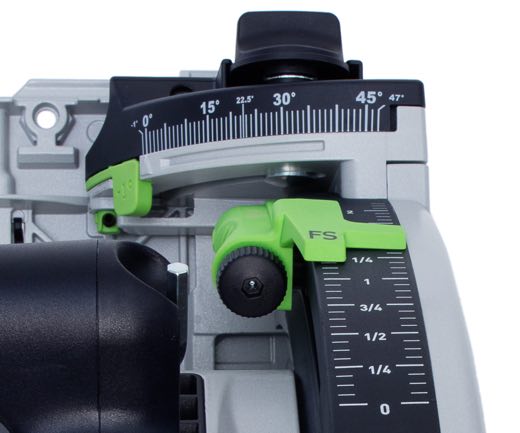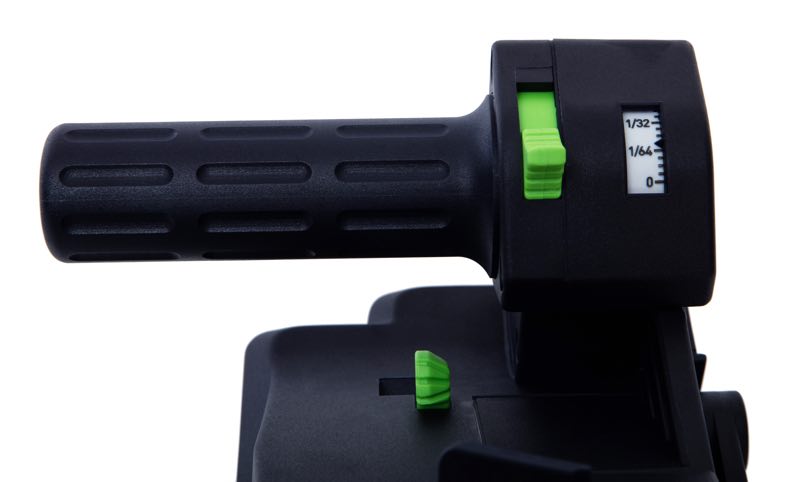|
|
|
|
|
Festool Goes Imperial (In North America)
|
|
|
|
|
 Earlier this Summer
Festool announced
that certain tools sold in North America will now come standard with imperial scales rather than their traditional metric markings (inches vs millimeters).
The tools initially impacted are
circular saws
(TS 55 REQ, TS 75 EQ, TSC 55 REB Li, and TSC 55 REB Li XL),
routers
(OF 1010 EQ, OF 1400 EQ, OF 2200),
planer
(HL 850 E), and certain circular saw accessories.
The announcement caused a stir and no small amount of controversy and confusion among Festool devotees. I’m going to clear this all up for you in a series of 4 quick points.
Earlier this Summer
Festool announced
that certain tools sold in North America will now come standard with imperial scales rather than their traditional metric markings (inches vs millimeters).
The tools initially impacted are
circular saws
(TS 55 REQ, TS 75 EQ, TSC 55 REB Li, and TSC 55 REB Li XL),
routers
(OF 1010 EQ, OF 1400 EQ, OF 2200),
planer
(HL 850 E), and certain circular saw accessories.
The announcement caused a stir and no small amount of controversy and confusion among Festool devotees. I’m going to clear this all up for you in a series of 4 quick points.
First, the controversy was principally among people who hang out on various blogs, and who, presumably, already own some Festool equipment.
The conversations ranged from "Whoopee!" and "Finally!" rejoicing, to "Why go backwards?" grumbling from those who think the imperial measuring system is archaic, to "Festool has finally given up trying to convert America to the metric system."
All of that is, as we used to say in Texas, just "jawboning." Festool is a very, very smart company, and a change like this for a specific market is not something smart companies do lightly.
You can be assured that the decision was well-researched, test marketed, and arrived at carefully. And it’s done.
Second, for all the current Festool owners, the decision to convert some tools to the imperial measurement system was not made for you.
In all likelihood, if you have Festool equipment, you have it because it is superior equipment, performs flawlessly, lasts forever (or nearly so), and speeds up and improves your work.
Once you have experienced one Festool tool, you will likely buy more, and it makes no difference to you if measurement markings are in metric, imperial, or Klingon.
The tools are just that good.
 Third... and this is where I will probably get some heated blowback... I don’t know many people, myself included, that actually
use
the measurement markings on any handheld power tool.
It’s just not the way most people work. Changing the depth of cut on a circular saw is actually done somewhat infrequently.
And when we do, we just lower the blade next to the piece we are cutting to see if it is deep enough to make a clean cut and then we start cutting.
On a router, the depth of some cuts can be fairly critical, and rarely would we trust a tool scale marking enough to use only that.
We might get a rough setting via the markings, but we make a test cut to be sure.
The depth of cut marking on the hand planer could also be useful to get “in the ballpark,” but for a critical cut, most people will dial it in via a series of test cuts.
In fact, even though I meticulously calibrated the scale on the rip fence of my
SawStop
saw, I don’t trust it for critical cuts… I measure.
This change was not made for current owners. This change was made to remove a
potential
objection to the sale of Festool equipment to
new
users
. Sales people always talk about "overcoming objections."
Remove all the objections, and the buyer is left with no decision except to buy. Festool has wisely removed this one tiny objection for North American buyers, leaving only “price” as a sales objection to overcome.
And, as we Festool owners know, that single objection quickly evaporates as soon as you own your first Festool tool.
Third... and this is where I will probably get some heated blowback... I don’t know many people, myself included, that actually
use
the measurement markings on any handheld power tool.
It’s just not the way most people work. Changing the depth of cut on a circular saw is actually done somewhat infrequently.
And when we do, we just lower the blade next to the piece we are cutting to see if it is deep enough to make a clean cut and then we start cutting.
On a router, the depth of some cuts can be fairly critical, and rarely would we trust a tool scale marking enough to use only that.
We might get a rough setting via the markings, but we make a test cut to be sure.
The depth of cut marking on the hand planer could also be useful to get “in the ballpark,” but for a critical cut, most people will dial it in via a series of test cuts.
In fact, even though I meticulously calibrated the scale on the rip fence of my
SawStop
saw, I don’t trust it for critical cuts… I measure.
This change was not made for current owners. This change was made to remove a
potential
objection to the sale of Festool equipment to
new
users
. Sales people always talk about "overcoming objections."
Remove all the objections, and the buyer is left with no decision except to buy. Festool has wisely removed this one tiny objection for North American buyers, leaving only “price” as a sales objection to overcome.
And, as we Festool owners know, that single objection quickly evaporates as soon as you own your first Festool tool.
Fourth... and this is the main point… it is time to rejoice.
No matter whether you think the metric-to-imperial change was good, bad, or "so-what," no matter whether you use the scale markings on tools or not, it tells me one very profound thing...
the North American market has become important enough to Festool to make a major engineering and manufacturing change
just for us
.
The change means they have invested in us. The change means they are here to stay, they listen, and they care.
What more could you possibly want from a tool company?

|
|
|
|
|